Operation Star. How Soviet armies liberated Kharkov
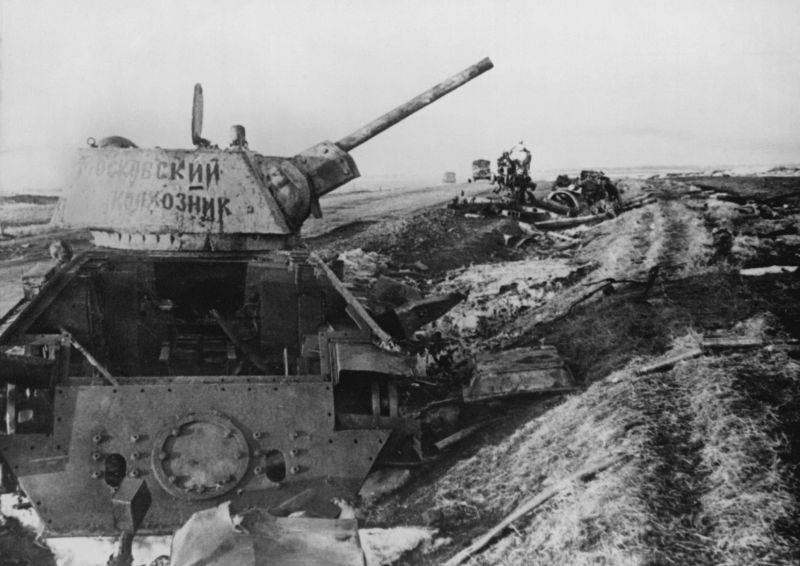
Tank T-34 "Moscow Collective Farmer", shot down between Belgorod and Kharkov
"Star"
In January - early February 1943, the Wehrmacht suffered a series of heavy defeats. The main forces of Army Group B were defeated: the 6th Army of Paulus was destroyed and captured, the Romanian, Italian and Hungarian formations were utterly defeated and captured, the German 2nd Army was defeated (The defeat of the 2nd German army). Army Group Don is drained of blood. Army Group A, operating in the North Caucasus, was forced to retreat to Rostov and the Taman Peninsula. Its 17th army (17 divisions) was isolated from the main forces, holding the defense on the Kuban line.
The enemy defenses were broken through on a broad front. The German command did not have strategic reserves to close all the gaps. The Germans had to maneuver with the available mobile formations, but their forces were not infinite. Many directions and sections were formed, which were covered only by small barriers.
The Red Army returned Stalingrad - the most important railway junction, threw the enemy back from the Volga - the country's strategic communications, expelled the enemy from economically important regions of the USSR, liberated millions of Soviet citizens.
The situation was favorable for the development of an offensive against Kharkov. On January 21, 1943, the representative of the Headquarters of the Supreme Command, Marshal Vasilevsky, and the commander of the troops of the Voronezh Front (VF), Colonel-General Golikov, submitted a plan of operation to liberate the regions of Belgorod and Kharkov for consideration by the Headquarters of the Supreme Commander-in-Chief.
3-I tank the army was supposed to strike in the direction of Olkhovatka, Chuguev, bypassing Kharkov from the southwest. The right wing of the VF - the 69th, 40th, 38th and 60th armies, were supposed to reach the northeastern outskirts of Kharkov, after the liberation of Belgorod. Also, the troops of the 38th Army were to liberate Oboyan. In the future, it was planned to continue the offensive on Poltava.
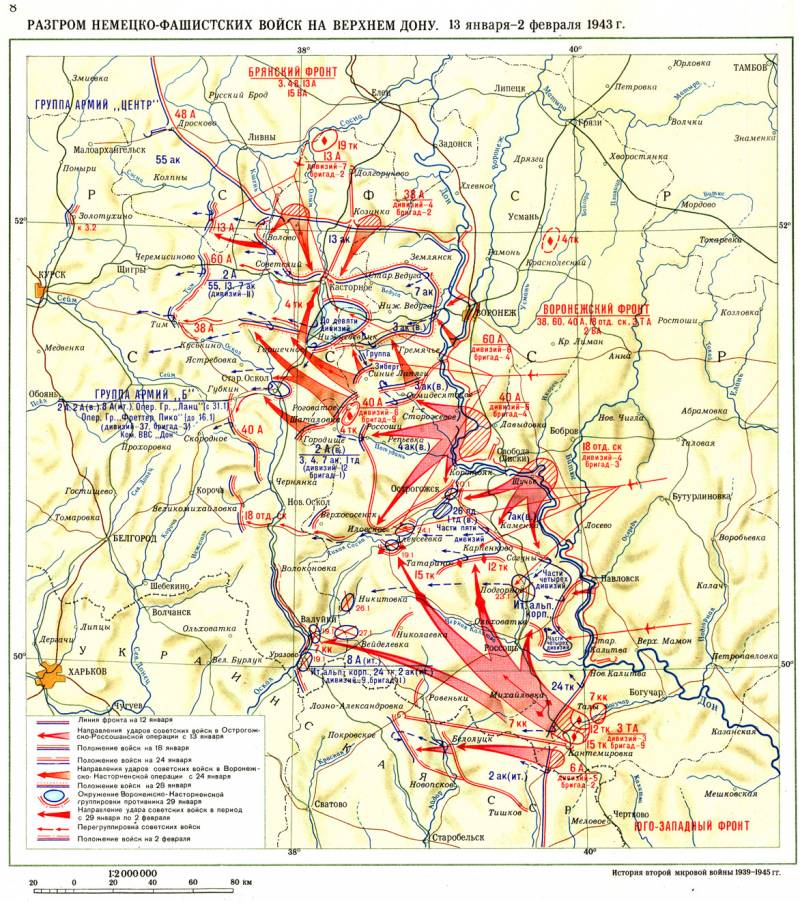
On January 23, Stalin approved the plan for Operation Zvezda.
Three days later, the VF received an additional task: to capture the Kursk region with the armies of the right wing. Thus, the troops of the VF were dispersed into two directions - Kharkov and Kursk. The Headquarters, the General Staff and the command of the VF believed that the enemy was defeated, his defenses were weak and poorly equipped. There are few German troops, no reserves. Therefore, two problems can be successfully solved.
It was not taken into account that the formations of the VF had been conducting offensive battles in winter conditions for two and a half months, suffering heavy losses. The rear areas were stretched out and did not keep up with the troops that had rushed forward, which led to serious problems in the supply of ammunition and fuel. For the armies that broke out to the west, did not have time to relocate aviation.
Thus, the 40th Tank Corps was transferred to the 4th Army, but it was still solving the tasks of destroying the enemy grouping blocked during the Voronezh-Kastornenskaya operation. Therefore, at the beginning of the operation, Moskalenko's army was able to allocate only one tank brigade and 3 tank regiments to the strike force.
The 18th separate rifle corps of Kazakov, which was deployed into the 69th army (5 divisions and one tank brigade), had only a few days to regroup the troops and form a strike group. The new army did not yet have its rear organs. The 60th and 38th armies were swapped, there was little point in this, but it added work to the headquarters and troops. It was necessary to regroup the troops and rear areas in a short time, relocate the armies to new supply stations, etc.
Rybalko's 3rd Tank Army, reinforced by the 6th Guards Cavalry Corps, was heavily drained of blood: 12 tanks remained in the 15th and 20th tank corps, 179 and 201 tanks in the 10th and 35st separate tank brigades . Formally, there were about 400 tanks in the army, and reinforcements of about 100 thirty-fours also arrived. And at the starting line for the attack turned out to be 165 vehicles. The rest, due to malfunctions, bad roads, lack of fuel, were scattered along the 270-kilometer army route to Buturlinovka, which was the main supply base.
Rear communications of the army stretched for 270 km. In units and warehouses, there were from 0,2 to 3 rounds of ammunition, from 1,4 to 5 refuelings of diesel fuel, from 0,7 to 2,5 refuelings of gasoline. But their transportation was also difficult due to the small number of vehicles.
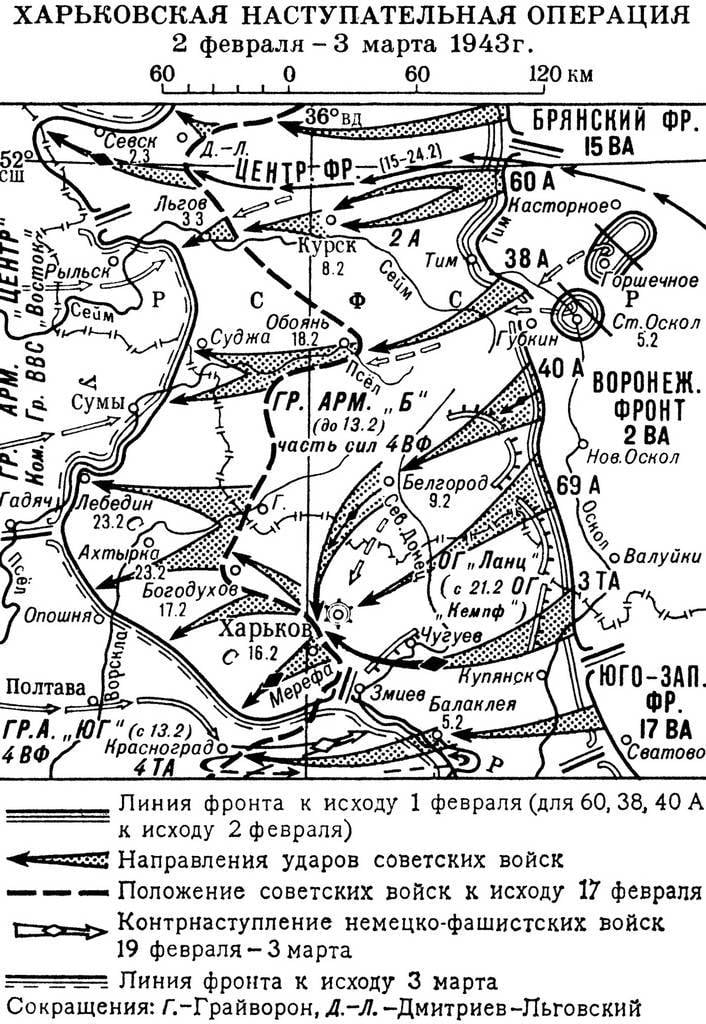
german army
In front of the Soviet armies at the beginning of the operation there were 11 heavily beaten divisions of the 2nd German army from the 55th, 13th army and 24th tank corps. Also, the remnants of 9 German and Hungarian divisions (7th Army and 3rd Hungarian Corps) were in a bag in the Gorshechnoye-Stary Oskol area, breaking through to Oboyan. Part of the German troops broke through, but suffered heavy losses in manpower and abandoned heavy weapons and equipment.
In front of the center and the left wing of the VF, the German troops, directly covering the Kharkov direction, were united in the Lanz army group (commander General Hubert Lanz). Initially, it included police and security units, the remnants of the German and Hungarian units. The combat core was the motorized division "Grossdeutschland" (61 battle tanks), transferred from the army group "Center", as well as the remnants of the 298th and 168th infantry divisions.
South of Kupyansk, in the zone of the 6th Army of the Southwestern Front, the 320th Infantry Division retreated. In the depths, in the area of Volchansk, the remnants of the defeated 24th Panzer Corps were gathering. Defeated Italian Alpine Corps (The death of the Italian Alpine Corps) carried out a withdrawal in the direction of Belgorod in separate groups.
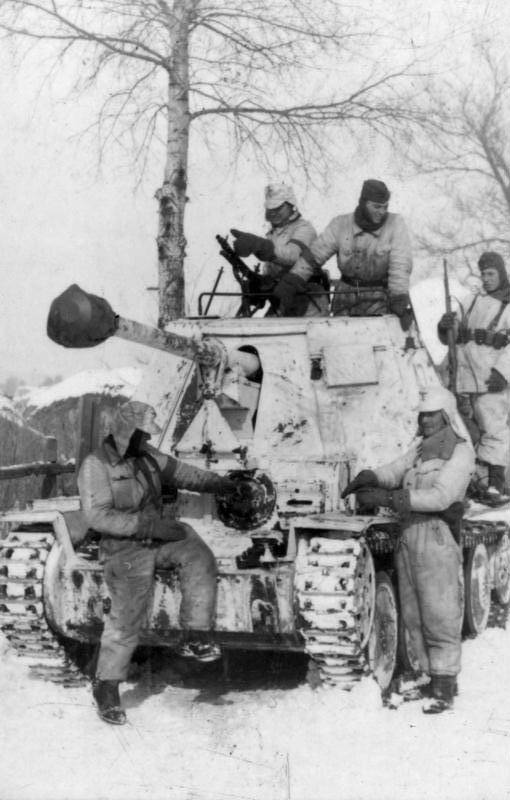
Soldiers of the 1st SS division "Leibstandarte SS Adolf Hitler" next to the Marder III anti-tank self-propelled guns. February 1943
The German command began the transfer to the threatened direction of the 26th Infantry Division from Orel and the 4th Panzer Division from the Mtsensk area. Also, the first echelons of the SS Panzer Corps under the command of General Hausser, which included the elite divisions "Reich", "Adolf Hitler" and "Dead Head", began to arrive in the Kharkov region from France. Not expecting a full concentration of divisions, their units immediately went to their positions.
The German army did not have a unified defense, only separate intermediate lines and defense centers. The operational documents of the 3rd Panzer Army noted:
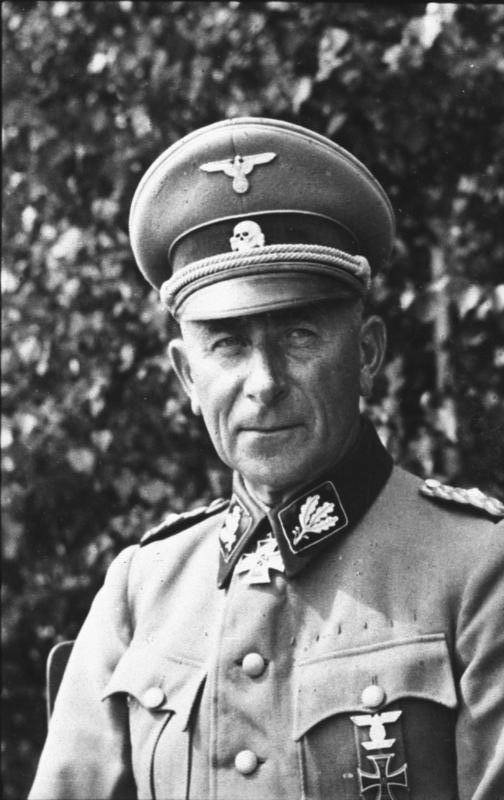
Commander of the SS Panzer Corps Paul Hausser
The beginning of the battle
On February 2, 1943, the troops of the 3rd Panzer and 69th Armies were the first to go on the offensive. They attacked Kharkov. On the morning of February 3, the troops of the 38th, 40th, 60th and 13th armies joined the operation.
At first, the operation developed as planned, very successfully. Knocking down the weak barriers of the enemy, the Soviet troops quickly moved forward. The 60th Army of Chernyakhovsky traveled 30 kilometers in two days, liberating the cities of Shchigry and Tim. On February 8, the Red Army liberated Kursk. The main forces of the 13th Army reached the Orel-Kursk railroad, and on February 7 they liberated Fatezh.
Moskalenko's 40th army advanced quickly. On February 5, Stary Oskol was liberated. On February 6, the right flank of the army crossed the Seversky Donets, captured the large Gostishchevo station 20 kilometers north of Belgorod, the left flank reached the city of Korocha, fighting the rearguards of the retreating 168th division. On February 9, our troops liberated Shebekino and Belgorod.
The offensive of Kazakov's 69th army also proceeded without complications. On February 9, she liberated Volchansk and developed an offensive against Kharkov. On February 5, the 5th Panzer Army entered the eastern bank of the Donets. Rifle divisions marched in its first echelon, General Rybalko decided to save tank formations until reaching the west coast in order to bring them into battle near Kharkov itself. True, tank corps lost vehicles due to breakdowns simply on the road, without fighting.
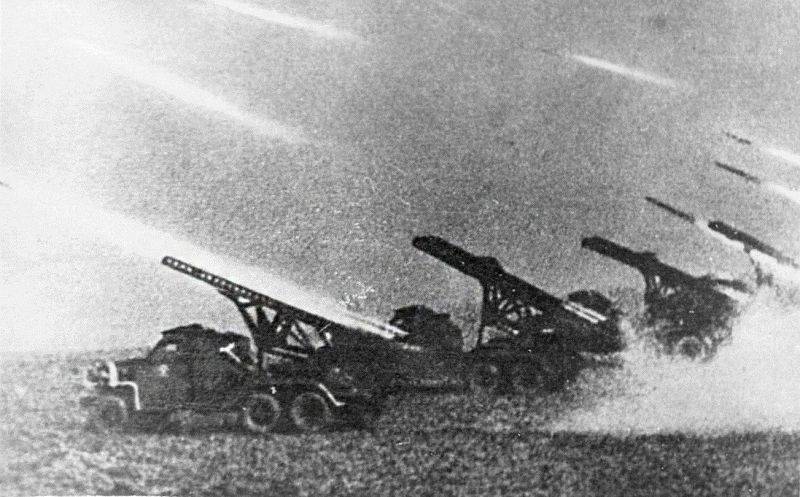
Volley of Soviet guards rocket launchers BM-13 "Katyusha" in the Belgorod-Kharkov direction
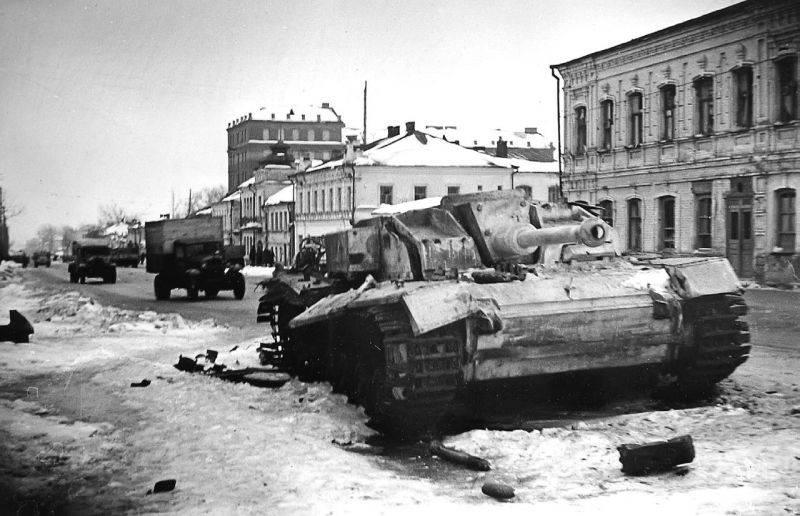
Destroyed German self-propelled gun StuG III Ausf. F of the 202nd Assault Gun Battalion on Lenin Street in the liberated Kursk. The machine is equipped with wide winter caterpillars Winterketten
SS Panzer Corps enters the battle
After the liberation of Belgorod, the divisions of General Moskalenko ended up 55 km from Kharkov. The shock group formed by the army commander, consisting of 4 rifle divisions and the 4th tank corps (it was transformed into the 5th guards) turned south, directly to Kharkov. The right flank of the army went around, to Grayvoron and Bogodukhov. The 38th Army was somewhat behind, unable to maintain such a pace.
As our troops advanced towards Kharkov, the resistance of the enemy increased noticeably: the Germans brought the arriving units into battle, destroyed communications in order to slow down the pace of the Russian advance, fought stubbornly for each settlement. The SS Panzer Corps appeared on the battlefield. It included the most elite formations of the SS and the entire Reich. Well-armed, equipped with selected, well-trained and motivated "Aryans": 1st SS Panzer Division "Leibstandarte SS Adolf Hitler", 2nd SS Panzer Division "Reich", 3rd SS Panzer Division "Totenkopf". In the attack, the mobile SS divisions were swift, in the defense they fought to the death. The SS men did not leave their positions without an order and did not surrender, in fact, they were not taken prisoner.
In 1941, the SS motorized divisions showed high fighting qualities in the offensive. There were shortcomings, but in general it was really the fighting elite of the Third Reich. In 1942, these divisions were brought to Europe and reorganized into panzergrenadier, in essence, tank. They included two motorized infantry regiments (in each motorized regiment one battalion was fully "armored" - on an armored personnel carrier) and one tank regiment (about 150 vehicles, including a heavy tank company - 9 "tigers"), an assault gun division (31 vehicles), motorized an artillery regiment, a self-propelled anti-tank battalion (30 self-propelled guns "Marder"), an anti-aircraft artillery battalion, a 150-mm rocket mortar battalion and other units and subunits.
The SS troops were among the first to receive the new MG 42 machine gun, which is considered one of the best machine guns of the Second World War. For its high rate of fire among Soviet front-line soldiers and allies, he received the nicknames "Bone Cutter", "Hitler's Circular Saw" and "Cross". Also, the SS divisions were distinguished by their mechanization: the presence of a large fleet of cars and tractors made the work of rear and repair services very efficient. The SS men were soundly equipped for operations in winter conditions.
The fresh SS Panzer Corps were a serious force. Hitler was sure that, if necessary, his "Aryans" would pass from Kharkov to Stalingrad. At the end of January 1943, units of the Reich division began to arrive in the Kharkov region. Directly from the echelons they were sent to the front line. Following in Chuguev, the Leibstandarte of Joseph Dietrich began to land. As they arrived, the SS units began to take up positions on the western bank of the Donets from Volchansk to Liman. The forward detachments entered the battle from 2 February. In total, the two SS divisions that arrived had about 220 tanks ready for battle.
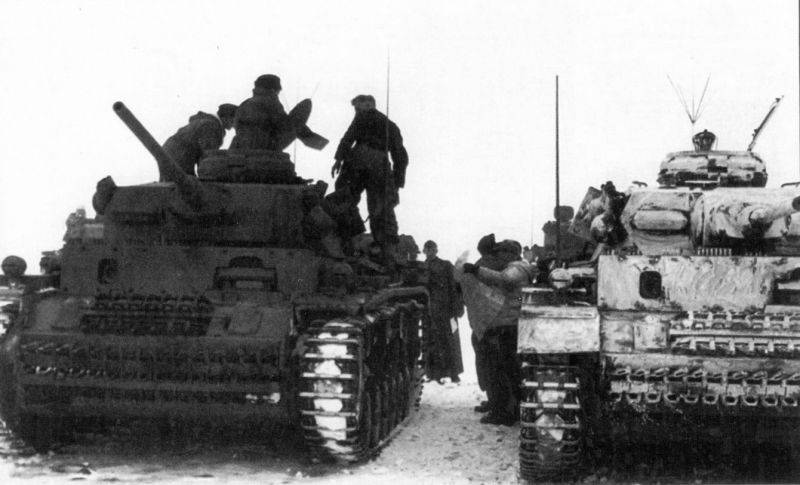
A group of command tanks Pz. Kpfw. III Ausf. M Division "Grossdeutschland". February-March 1943
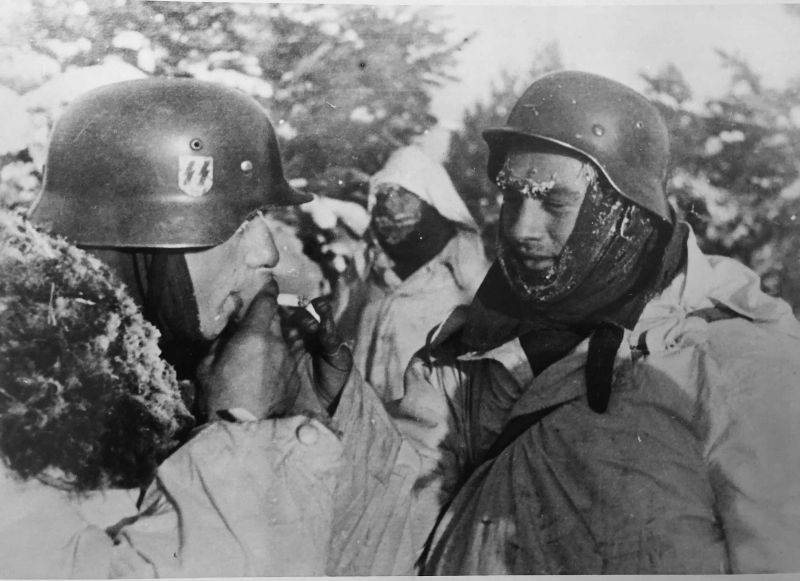
Grenadiers of the SS troops near Kharkov
Battle for Chuguev
On February 5, 1943, Rybalko's tank army, on the outskirts of Chuguev, collided with the defense of the SS Reich division. The Germans blew up bridges, mined ice crossings, and set up long-term firing points on commanding heights. The city was turned into a strong stronghold, saturated with anti-aircraft guns and other anti-tank weapons.
For four days our troops tried unsuccessfully to cross the river. The Germans even tried to counterattack, struck at the junction of the 69th and 3rd tank armies, but our troops repelled the attack. And the Nazis did not have enough strength for a serious blow. Commander Rybalko had to throw tank corps into battle. The 12th Corps of Zinkovich, with the support of the 62nd Infantry Division, began the assault on Chuguev. The 15th Corps of Koptsov, in cooperation with the 160th Infantry Division, fought for the Pechenegs.
The breakthrough of Moskalenko's army from Belgorod created a threat of encirclement of the German Kharkov group. On February 9, the Reich division stopped counterattacks and retreated. The 69th Army of Kazakov liberated Volchansk. The next day, the German command began to withdraw forces from the Seversky Donets to Kharkov. Rybalko's army liberated Chuguev and Pechenegs. Sokolov's 6th Guards Cavalry Corps with the 201st Tank Brigade, bypassing Kharkov from the south, advances to the Merefa area.
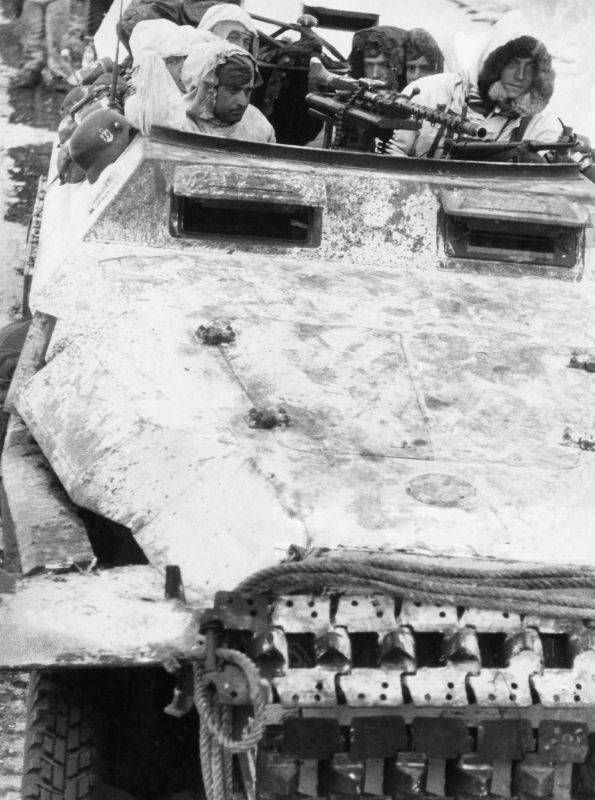
Soldiers of the SS troops on an armored personnel carrier Sd. Kfz. 251 during the attack on Kharkov
Assault on Kharkov
On February 10, 1943, General Rybalko sent out a plan for the assault on Kharkov to the troops. The original plan was to transfer the 12th Panzer Corps to Sokolov for an attack from the west. But by the evening the commander changed his mind. The tank corps was aimed directly at the city.
The Germans defended actively and counterattacked. On February 12, the enemy strike group, with a blow from Merefa, where the headquarters of the SS Panzer Corps was, cut off the communications of our cavalry corps. Sokolov's corps retreated to Melikhovka, where the supply was carried out with the help of aircraft. On February 13, the Peiper battle group broke through the corridor from Zmiev to Liman, providing an exit from the encirclement of the remnants of the 320th Infantry Division.
For four days, units of the 40th, 69th and 3rd tank armies fought with varying success on the outskirts of Kharkov. This was a mistake of the command of the armies and the front. A strong strike force (three armies), instead of deep and covering attacks on Bogodukhov (40th Army) and Merefa-Lyubotin (3rd Panzer Army), sought to take Kharkov. For eight days - from February 6 to February 14 - the main forces of Rybalko's army were tied up in an ineffective and difficult struggle.
As subsequent events showed, in the event of a deep coverage of Kharkov, it would not even have to be stormed. But of the 8 divisions of Moskalenko, only one went to Bogodukhov, and of the entire tank army, the cavalry corps went around from the south. The remaining 17 rifle divisions, 2 tank corps and 3 tank brigades were involved in heavy frontal battles.
On February 14, the Soviet armies began to storm the city. Kharkov was defended by a 55-strong German grouping: three full-fledged divisions - "Reich", "Grossdeutschland" (northern and eastern sector), "Leibstandarte" (southern sector), the remnants of three infantry divisions - the 168th, 198th and 320th th.
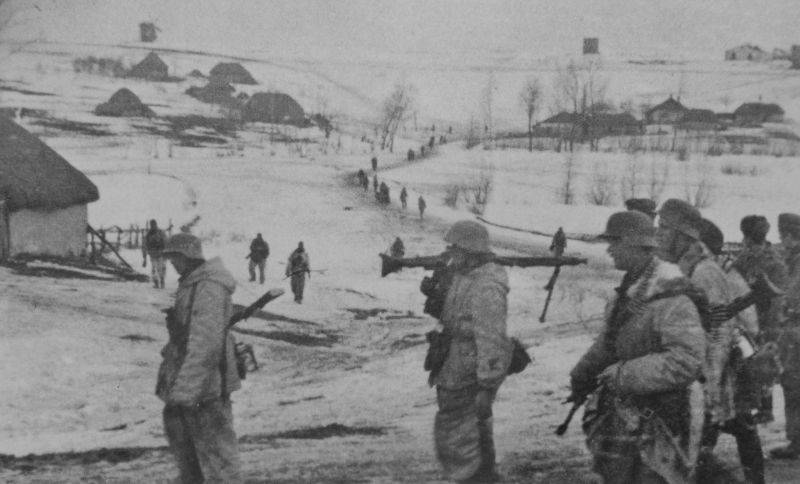
Soldiers of the SS Panzergrenadier Division "Leibstandarte SS Adolf Hitler" in the village during the battle for Kharkov
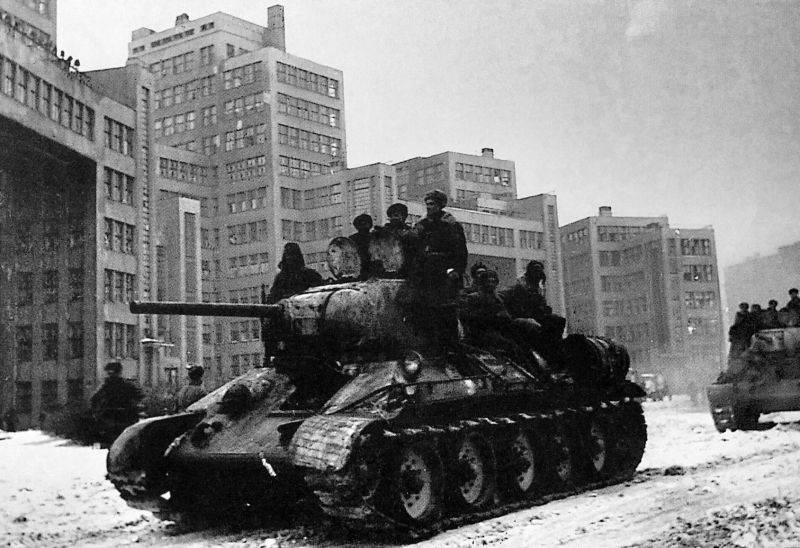
Soviet T-34 tanks with armored troops on Dzerzhinsky Square, during the first liberation of Kharkov. In the background is the Gosprom building. February 1943
There were fierce battles in the suburbs. The Nazis fought back furiously. Losses on both sides were high. However, the city was soon practically surrounded. Only the corridor south of Kharkov remained free. In this situation, the commander of the SS Panzer Corps Hausser, despite the Fuhrer's order to keep the city at all costs, made an independent decision to leave Kharkov and save the compound. On the night of February 15, the Germans began a breakthrough to the southwest, to Krasnograd. Interestingly, Hitler forgave a prominent member of the "black order" of the SS, with the wording: "Because he was right." And the commander of the army group, General Lanz, was removed and replaced by General Kaempfer.
On February 16, 1943, Russian troops liberated Kharkov. At the same time, the city was not badly destroyed, some factories that the Germans used to repair equipment even operated.
On February 18, the 38th Army liberated Oboyan, and in early March, Sudzha. On February 19, the soldiers of the 40th Army were in Bogodukhov, on February 23 Lebedin and Akhtyrka were liberated, on February 26 - Gadyach. Tanks of the 3rd Army liberated Merefa on February 18, and Lyubotin on February 22.
Thus, the VF armies advanced 100–260 km. The fourth largest city in the USSR, Kharkov, was liberated, as well as Kursk and Belgorod, and hundreds of other settlements. There was a hope that now I would drive the enemy to the Dnieper.
However, it was not possible to consolidate the success achieved during the offensive operation. Soon the Germans launched a counteroffensive.
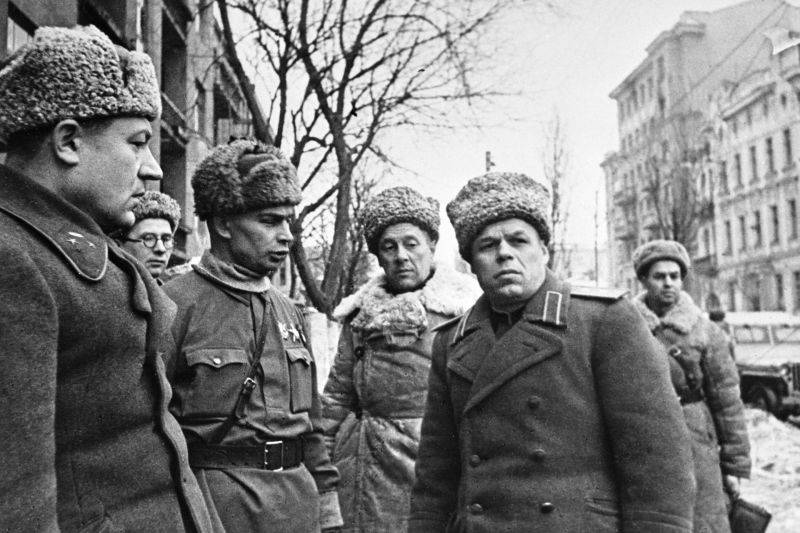
Lieutenant General of the tank troops P. S. Rybalko in the center of Kharkov. February 1943
Information